Graphics and performing artists bring multidimensional experiences to students. These artists engage students in their crafts and ways of thinking, challenging them and revealing how arts raise awareness Human Rights issues.
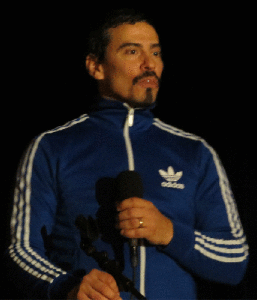
After their public performance, Roxey Ballet founder and choreographer invites members of the audience to ask questions and share their thoughts with members of the ballet corps.
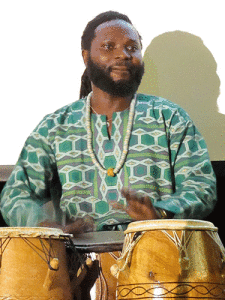
Theo Martey, founder and director of Akwaaba Ensemble, shown during a lesson in African drumming for students.
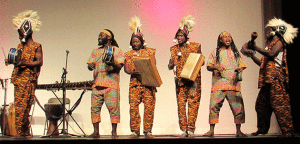
Akwaaba Ensemble brings high-energy West African drumming and dance performance that demonstrate the subtle rhythmic patterns and styles specific to different tribal groups. Students learn and practice several songs during workshops, then join the group on stage for public performances.
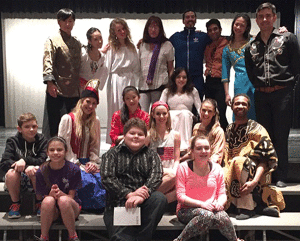
Roxey Ballet celebrates diversity through interpretive movement workshops and multi-media ballet performances. Students explore themes addressing bullying, the Holocaust, the Civil Rights Movement, disabilities, the veil, and substance abuse.
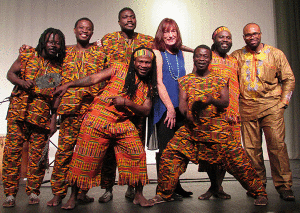
After their public performance that included participation by students, members of the Akwaaba Ensemble pose with Gertrude and, far right, Dr. Kingsley Kabari.
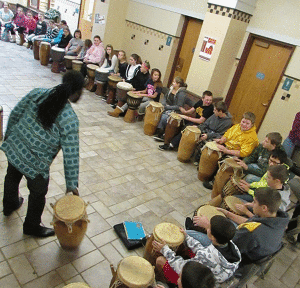
Theo Martey, who grew up in Accra, Ghana, is the founder and director of the Akwaaaba Ensemble. An internationally acclaimed musician, Theo and his group immerse students in African songs, rhythms, cultures and dance, then perform together for classmates and parents.
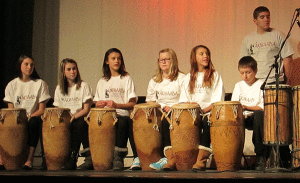
Following training and practice workshops, students – shown here awaiting their cue – accompany the Akwaaba Ensemble in performing West African songs.
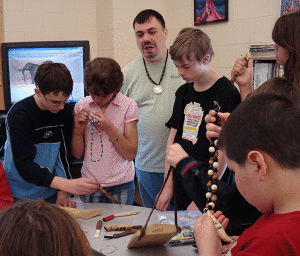
Donald Gregory (Heindei), a Tlingit artist from Alaska, shows students examples of his crafts and explains the meaning behind the representations.
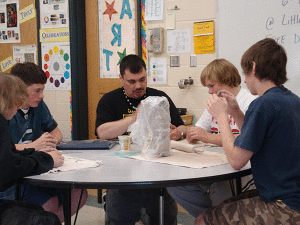
Here Donald Gregory instructs students on the making of ceramic and clay statues that represent elements of natural surroundings.
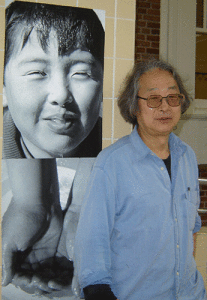
Ichi Ikeda builds his art installation The Water Carriers that highlights the importance of everyone being stewards for access to clean water for future generations.
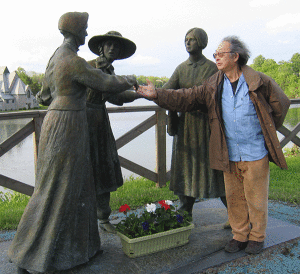
Here artist Ichi Ikeda shakes hands with Susan B. Anthony in this statue commemorating the site in Seneca Falls, New York, where Amelia Bloomer (center) introduced Ms. Anthony to Elizabeth Cody Stanton (right) in 1851. This meeting ultimately led to passage of the 19th Amendment that gave women the right to vote.

Jackie Tice is a Native American singer, songwriter who shares the history and culture of her heritage through singing and story-telling. Here she and the school chorus are performing songs they co-wrote with her.
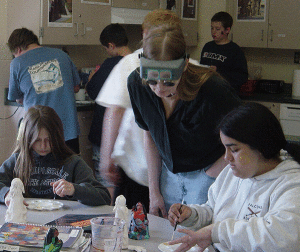
Disabled artist Jamie Winter inspires students to create ceramic works influenced by Native American Wisconsin’s Ho-Chunk tribal culture.
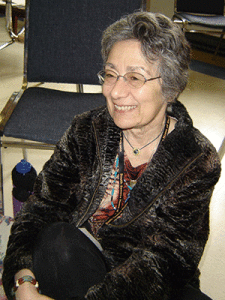
Jane Schuster, poet and author, engages students in peaceful, respectful political expression through figurative language and poetry workshops. Her engaging presence prompted students to nickname her Our Serene Highness.
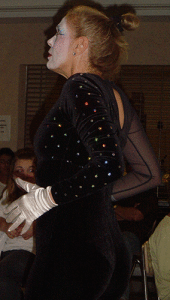
Mime performer and author of the book Yoga of MIME: Touching the Invisible, Janet Carafa demonstrates and then ”translates” her vignettes into words. Students then enact their thoughts and feelings through physical movements without words.
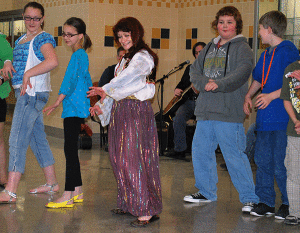
June Seaney teaches adults and children the dances of Middle Eastern and Romani traditions. She and her troupe members are frequent entertainers at festivals, and conduct outreach lessons to local schools and organizations.
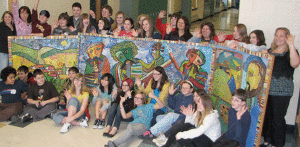
Katilin Papp (behind the painting, black blouse), a Slovakian Roma artist, brings Slovakian childrens’ artwork to introduce the ongoing prejudice and hostility faced by Roma people, using art as a means of identifying and breaking down stereotypes. This event was co-organized with Breana Copp (rear, right).
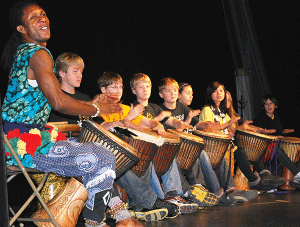
Nana Amin brings West African songs, rhythms and dance to classrooms, helping students learn about and better understand the history and cultural heritage of his native country, Ghana.
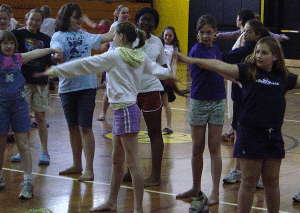
Under direction of members of the Roxey Ballet, students learn several basic ballet movements, during which they discover both the required artistry and athleticism of dance.

Members of the Roxey Ballet teach students the “street version” of breakdancing, which was Mark Roxey’s ticket to peer acceptance as a teenager who loved to dance.
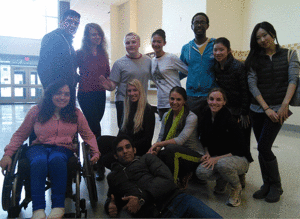
This shows the talented members of the Roxey Ballet, a professional dance company from Lambertville, NJ. During two days in Spring, 2015, each member brought their stories and artistic interpretations to workshops with students, concluding with the troupe performing a series of dances that interpreted themes such as bullying, the Holocaust, the Civil Rights Movement, disabilities, the veil, and substance abuse.
